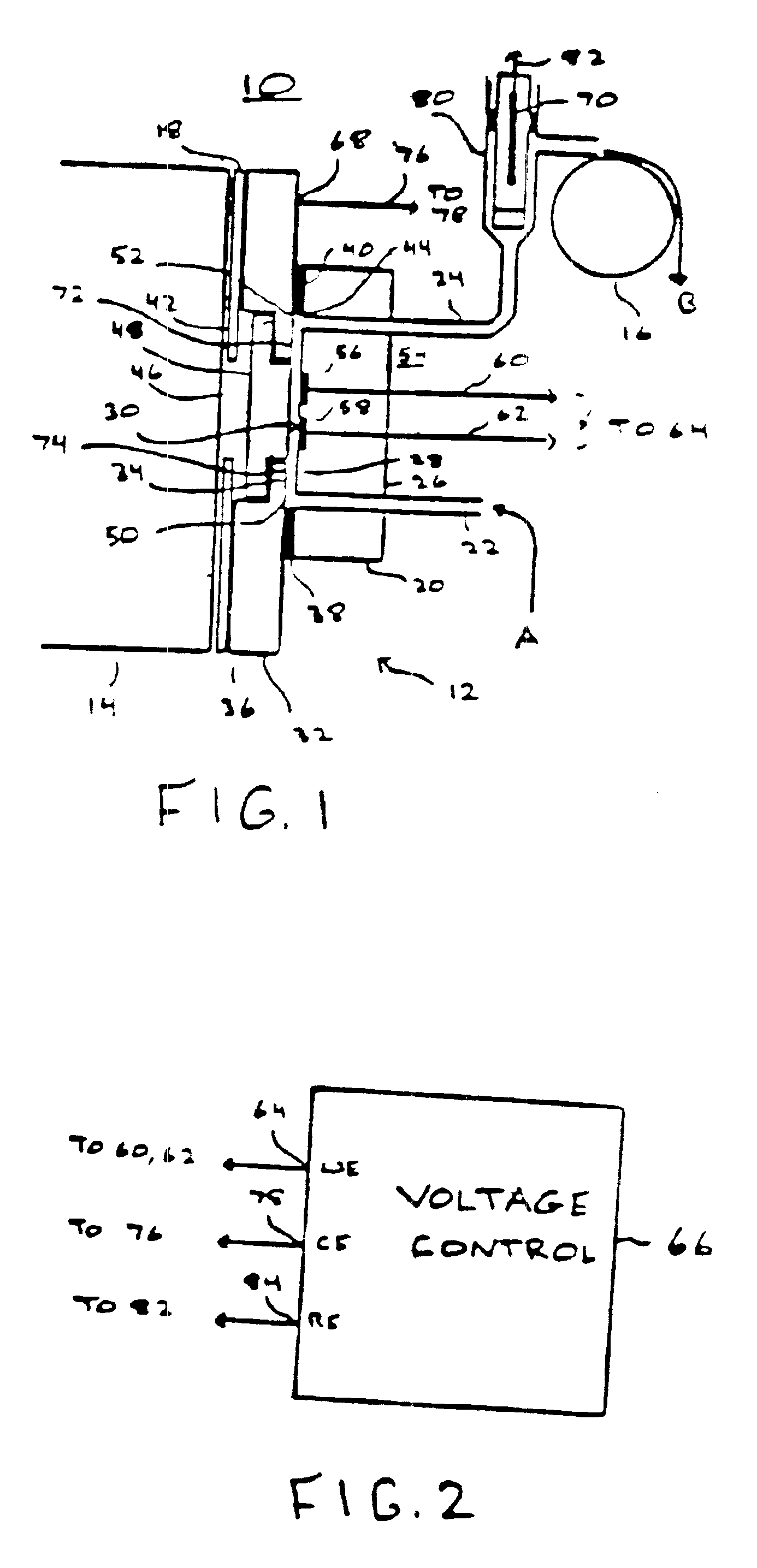Particle based electrochemiluminescent assays
a technology of electrochemiluminescence and particle based assays, which is applied in the direction of fluid pressure measurement, instruments, ruthenium organic compounds, etc., can solve the problems that the prior art assay technique and the use of microparticulate matter in the assay medium do not appear to be applicable to assays wherein
- Summary
- Abstract
- Description
- Claims
- Application Information
AI Technical Summary
Benefits of technology
Problems solved by technology
Method used
Image
Examples
example 1
[0134]A microparticulate-based nonseparation competitive binding assay for the determination of theophylline was conducted as follows:[0135]reagents:[0136](1) theophylline standards: 0, 2.5, 5, 10, 20, 40 ug / ml;[0137](2) theophylline tracer (100 nM) (theophylline-8-butyric acid linked to TAG);[0138](3) anti-theophylline monoclonal antibody covalently coupled to BioMag(R) (magnetic particles) 1% suspension wt / vol);[0139](4) ECL buffer.
[0140]A series of tubes (12×75 mm polypropylene) were set up and labeled according to standards to be assayed. Into each tube was added 920 ul of ECL buffer, 10 ul of respective standards or samples, 20 ul of anti-theophylline-BioMag(R) and 50 ul of diluted theophylline tracer. Tubes were mixed and incubated at room temperature for 10 minutes. Electrochemiluminescence was read in the flow-through ECL instrument. The results were as follows:
[0141]
TheophyllineECL UnitsConcentration(after background% of Totalug / mlNSB subtraction)ECL Counts0.0505031.72.5650...
example 2
[0142]A microparticulate-based nonseparation binding assay to determine human IgG was prepared having the following components:[0143](1) human IgG standards: 2, 20, and 200 ug / ml;[0144](2) goat anti-human IgG covalently coupled to BioMag(R) particles (1% suspension wt / vol);[0145](3) TAG-labeled human IgG diluted to {fraction (1 / 160)} of stock in ECL buffer;[0146](4) ECL buffer: 75 mM potassium phosphate buffer at pH 7.24 containing 100 mM tripropylamine (TPA) and 0.05% Tween-20;[0147](5) goat anti-rabbit IgG covalently coupled to BioMag(R) (1% suspension) for nonspecific binding determination.
[0148]A series of tubes (12×75 mm polypropylene) were set up and labeled according to standards to be assayed. Into each tube was added 100 ul of TAG-human IgG and 100 ul of the respective human IgG standard (0 to 200 ug / ml). A 50 ul aliquot of goat anti-human IgG-BioMag(R) and a 750 ul aliquot of ECL buffer was then added to each tube followed by vortexing and a 20 min room temperature incubat...
example 3
[0151]A microparticulate-based nonseparation binding assay to determine mouse IgG was conducted using the following components:[0152](1) mouse IgG standards: 4, 20, and 200 ug / ml;[0153](2) goat anti-mouse IgG covalently coupled to polystyrene latex particles (0.5% suspension wt / vol);[0154](3) TAG-labeled mouse IgG diluted to {fraction (1 / 2600)} of stock in ECL buffer;[0155](4) ECL buffer;[0156](5) BSA-polystyrene latex particles (0.5% suspension) for nonspecific binding determination.
[0157]A series of tubes (12×75 mm polypropylene) were set up and labeled according to standards to be assayed. Each tube received 900 ul of TAG-mouse IgG solution and 50 ul of the respective mouse IgG standards. Either 50 ul of goat anti-mouse IgG-latex or BSA-latex was added to the tubes to initiate the immunoreaction. The tubes were incubated for 25 min at room temperature without agitation.
[0158]ECL of the suspensions was read according to normal flow-through protocol.
[0159]The results were as follow...
PUM
| Property | Measurement | Unit |
|---|---|---|
| diameter | aaaaa | aaaaa |
| diameter | aaaaa | aaaaa |
| diameter | aaaaa | aaaaa |
Abstract
Description
Claims
Application Information
 Login to View More
Login to View More - R&D
- Intellectual Property
- Life Sciences
- Materials
- Tech Scout
- Unparalleled Data Quality
- Higher Quality Content
- 60% Fewer Hallucinations
Browse by: Latest US Patents, China's latest patents, Technical Efficacy Thesaurus, Application Domain, Technology Topic, Popular Technical Reports.
© 2025 PatSnap. All rights reserved.Legal|Privacy policy|Modern Slavery Act Transparency Statement|Sitemap|About US| Contact US: help@patsnap.com



